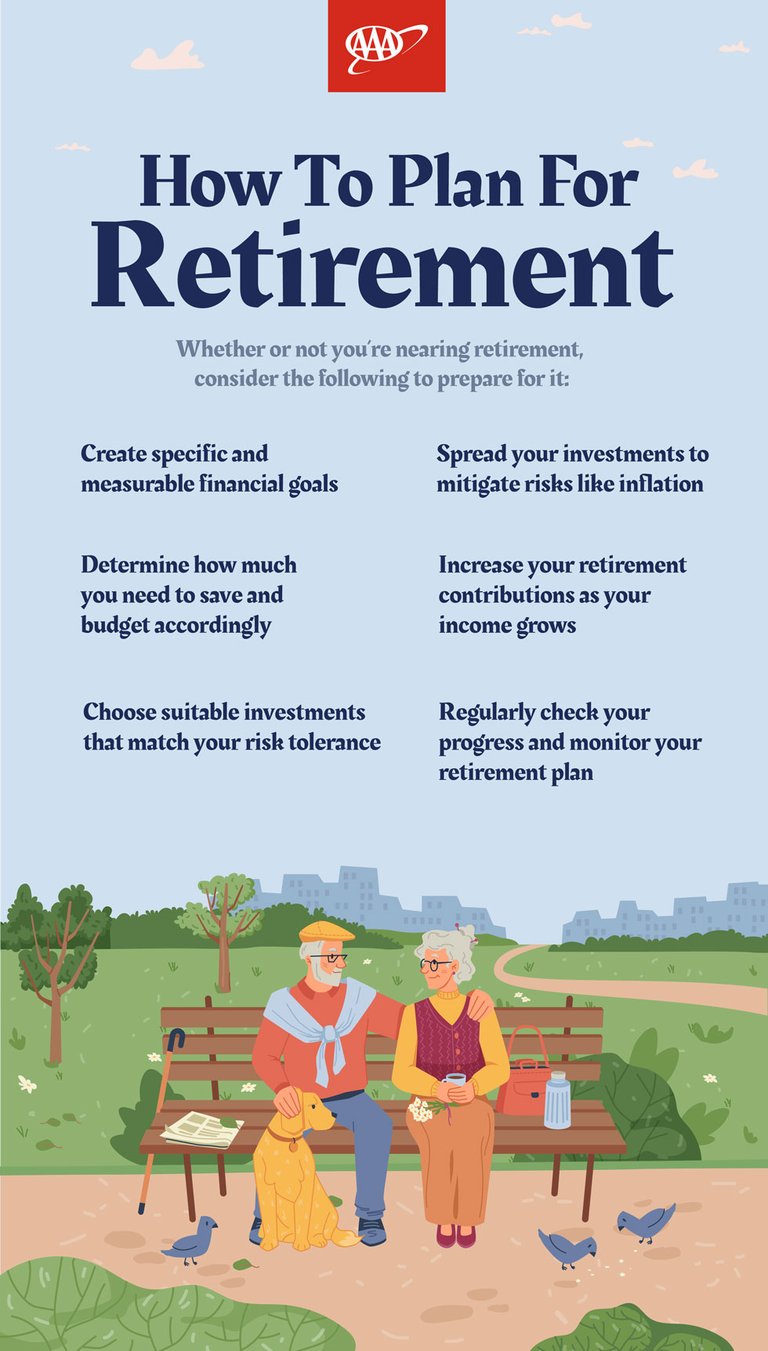How to Build a Retirement Savings Plan
The art of retirement planning: setting financial goals, evaluating investment options, and more at every life stage



Key elements of retirement planning
Building a solid retirement plan means setting clear goals, being aware of risks, and making smart investment choices. It’s something you need to keep up with and adjust regularly. But, before you create a timeline, it’s helpful to get familiar with the basics of retirement planning.

Set smart financial goals
One of the most important steps in retirement planning is setting clear financial goals. Without a clear target, you'll likely find it difficult to create a solid plan.
When setting your financial goals, aim to make them SMART:
- Specific
- Measurable
- Achievable
- Relevant
- Time-bound
When you know exactly what you want, you can break it down, figure out the numbers, and hit your savings milestones along the way.
Start budgeting and saving
Setting a retirement goal helps you determine how much you need to save each month. Once you know your savings goal, creating a realistic budget can help you track where your money goes each month. While budgeting might feel a bit restrictive at first, it’s essential for staying on track with your savings. It can actually give you more freedom, allowing you to still enjoy your favorite things while saving for retirement.
A retirement calculator is a handy tool to help you see how much you need to save.

Select investments
Choosing suitable investment options is another key part of retirement planning. You’ll want to pick investments that match your risk tolerance and goals to make the most of your money. You’ll also need to decide which types of accounts to use, like your company’s 401(k) or a traditional IRA at your bank. And if your employer offers a 401(k) match, be sure to take full advantage of it.
If you’re unsure where to start, a financial professional can help you find the best options for your situation.
Manage your risks
Retirement planning isn’t just about building your savings; it’s also about keeping them safe. It’s wise to manage risks like inflation, changes in the market, and making sure your savings last as long as you do. Spreading your investments across different areas can help with this.
It’s also a good idea to protect your money from unexpected events by having the right insurance, like home, auto, umbrella, disability, long-term care, and life insurance.
Timeline for retirement planning
Now that you know the basics, here’s a timeline to guide you through what to focus on in the coming decades as you move closer to your golden years.

Young adult (20S-30S)
The earlier you start saving for retirement, the more time your money has to grow. That’s because compound interest gets more time to work its magic, helping your money grow even more over the years.
For example, if you start investing $200 a month at age 25, you could have nearly $590,000 by age 65 (assuming a 7.8% annual interest rate). But if you wait until 35, you may end up with around $260,000. This shows that consistently investing smaller amounts over a longer period can be more effective than larger sums over a shorter time.
Key Actions:
- Create a budget and start saving, even if it’s just a small amount.
- Explore tax-advantaged accounts to find the best savings options for your long-term needs.
Mid-career (40S-50S)
By now, your income might have increased, but so have your financial responsibilities. With things like a mortgage, car payments, and raising kids, it’s important to revisit and tweak your retirement goals to stay on track. With so many demands on your time and money, setting clear and realistic goals becomes even more important.
Key Actions:
- Increase your retirement contributions as your income grows.
- Revisit your investment choices to make sure they still align with your goals.
- Regularly check your progress to ensure you’re on course.

Final stretch to retirement (50S-60S)
The last decade of your career is often when you’re earning the most, so it’s the perfect time to boost your retirement savings by contributing as much as you can. Don’t forget to take advantage of "catch-up" contributions once you’re over 50. These let you save even more—an extra $1,000 per year in an IRA or an extra $7,500 in a 401(k), 403(b), or 457 plan.
Key Actions:
- Keep a close eye on your investment mix as retirement approaches. Consider gradually shifting to less risky investment options like bonds and cash alternatives.
- Work on reducing or eliminating debt.
- Review your expected retirement income sources to ensure you’re on track for a comfortable retirement.
Transition to retirement (60S)
Retirement happens at different ages for everyone, but most people stop working in their late 60s. Remember, you can start receiving full Social Security benefits at age 67, but waiting until age 70 can help increase your benefits.
Key Actions:
- Manage the shift from saving to spending.
- Decide on your retirement timing and create a withdrawal strategy.
- Adjust your lifestyle as needed to align with your retirement plan.

Post-retirement
In retirement, the focus moves from saving to managing your withdrawals, making sure your savings last while still supporting your lifestyle. Ideally, you’ll have several income sources, like Social Security, retirement accounts, and maybe even an employer pension.
Key Actions:
- Continuously monitor your retirement plan and make adjustments as needed.
Planning for retirement is a process that changes as you go through different stages of life. By starting early, staying focused on your financial goals, and making smart adjustments along the way, you can work towards a secure and comfortable retirement. And if you ever need a hand, don’t hesitate to reach out to a financial professional for guidance.
